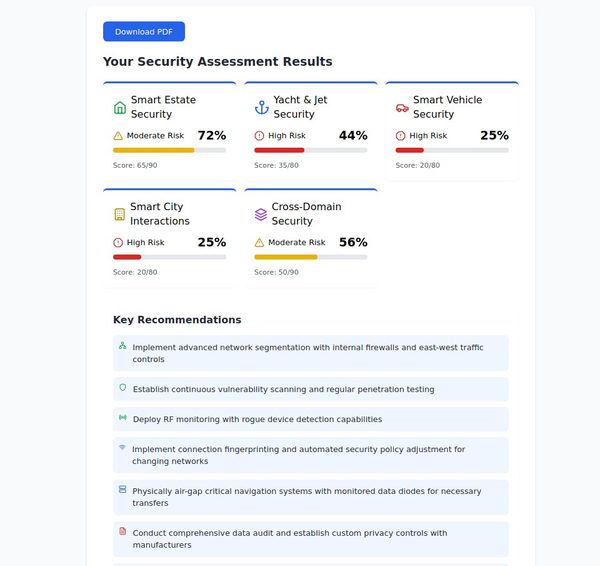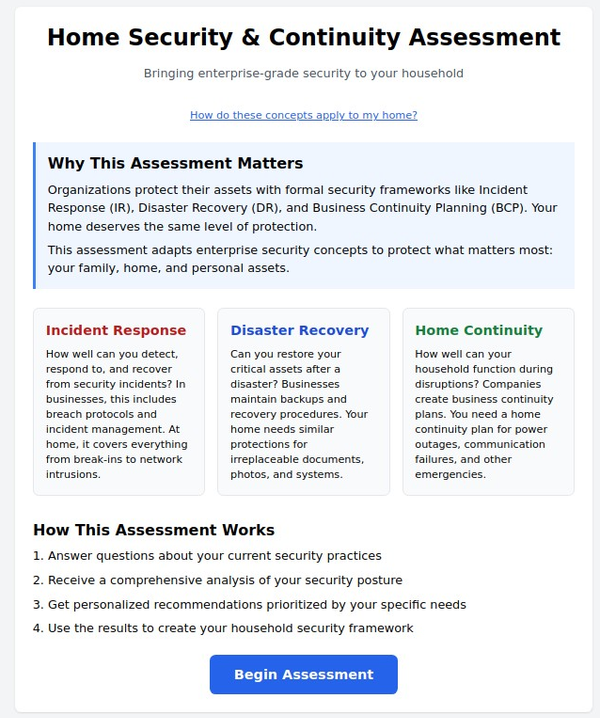Guide for Residents Near Critical Infrastructure: Protecting Your Home and Family

Introduction
Living near critical infrastructure—such as energy plants, pipelines, and major corporate facilities—has its unique challenges, especially in light of recent incidents such as cybersecurity breaches, fires, and other emergencies. As a resident, understanding how to protect your family and home is crucial. This guide provides practical checklists, methodologies, and procedures for residents near critical infrastructure to enhance their safety and preparedness.

I. Understanding the Risks
- Recognize Potential Threats
- Cybersecurity Incidents: Cyberattacks on nearby facilities can disrupt local services, including power and water, and may result in false alarms or communications being compromised.
- Physical Security Breaches: Unauthorized access or sabotage of facilities can lead to emergencies such as fires, explosions, or hazardous material releases.
- Natural Disasters: Events such as hurricanes, floods, or earthquakes can exacerbate risks around critical infrastructure by causing equipment failures or accidents.
- Know Your Proximity to Critical Sites
- Be aware of the types of critical infrastructure near your home (e.g., oil refineries, pipelines, chemical plants).
- Understand the specific risks associated with these sites (e.g., hazardous materials, potential for cyber-physical attacks).
- Familiarize yourself with evacuation routes, emergency services, and shelters in your area.

II. Home Safety Checklist
- Prepare an Emergency Plan
- Create a family emergency plan that includes multiple evacuation routes and a communication strategy.
- Designate a meeting point if family members are separated during an emergency.
- Practice your emergency plan regularly with all household members.
- Assemble an Emergency Kit
- Stock a kit with essentials: non-perishable food, water (one gallon per person per day for at least three days), first aid supplies, flashlights, batteries, medications, and personal hygiene items.
- Include important documents (IDs, insurance policies, bank records) in a waterproof container.
- Ensure you have backup power options such as a generator or portable battery packs.
- Enhance Home Security
- Install a reliable home security system that includes cameras, motion detectors, and door/window sensors.
- Use strong, reinforced locks on all doors and windows.
- Keep trees and bushes trimmed to eliminate hiding places for potential intruders.
- Secure Your Property Against Physical Threats
- Store flammable materials away from the house, such as gas cans or propane tanks.
- Install surge protectors and consider an uninterruptible power supply (UPS) to protect against power surges or outages.
- Reinforce doors, windows, and garage doors to withstand high winds or physical attacks.

III. Communication and Monitoring
- Stay Informed
- Sign up for local alerts and notifications from emergency services, local government, and critical infrastructure facilities.
- Follow local news outlets and official social media accounts for real-time updates.
- Invest in a NOAA Weather Radio for alerts on natural disasters or hazardous material releases.
- Establish a Communication Plan
- Designate a family member who lives outside the immediate area as a point of contact.
- Use text messaging or social media to communicate during emergencies when phone lines may be congested.
- Keep a list of emergency contacts, including neighbors, local authorities, and utility companies.
- Monitor Your Surroundings
- Regularly check for signs of unusual activity or potential threats near critical infrastructure sites.
- Report suspicious activity to local law enforcement or facility security.
- Stay aware of any unusual sounds, smells, or visual indicators (e.g., smoke, gas leaks) that may signal an emergency.

IV. Safety Measures for Cybersecurity Threats
- Protect Your Home Network
- Use strong, unique passwords for all devices and accounts.
- Enable multi-factor authentication (MFA) where possible.
- Keep all devices, software, and apps up to date with the latest security patches.
- Be Aware of Cyber Scams and Misinformation
- Be cautious of phishing emails or calls that claim to be from local utilities, government agencies, or emergency services.
- Verify information through trusted sources before acting on it, especially during a crisis.
- Educate family members, particularly children and elderly relatives, on recognizing and avoiding scams.
- Create Digital Backups
- Regularly back up important documents and photos to an external hard drive or cloud storage service.
- Secure sensitive information, such as financial records or personal identification, with encryption.
V. Preparation for Specific Scenarios
- Fire or Explosion Near Infrastructure
- Keep a fire extinguisher in accessible locations and ensure all household members know how to use it.
- Close windows, doors, and vents to prevent smoke or toxic fumes from entering your home.
- Evacuate immediately if directed by authorities and do not return until it is declared safe.
- Hazardous Material Release
- Identify a “safe room” in your home with minimal windows and doors to shelter in place if necessary.
- Prepare duct tape and plastic sheeting to seal doors, windows, and vents if instructed by authorities.
- Avoid consuming food or water that may have been contaminated.
- Cybersecurity Attack Affecting Utilities
- Keep extra cash on hand, as ATMs and credit card processing may be impacted.
- Have alternative lighting options (e.g., flashlights, candles) in case of a power outage.
- Conserve water if municipal water systems are compromised, and use stored water only.
VI. Community Collaboration and Support
- Engage with Local Community
- Join local neighborhood watch programs or community safety groups.
- Share resources and information with neighbors, especially the elderly or those with special needs.
- Volunteer for local emergency response teams or training programs.
- Coordinate with Local Authorities
- Attend local town hall meetings or community forums on emergency preparedness.
- Work with local emergency services to understand their plans and how residents can contribute.
- Provide feedback to authorities about potential security gaps or risks in your area.
- Develop a Community Action Plan
- Collaborate with neighbors to develop a collective emergency response plan.
- Identify skills and resources available within the community (e.g., medical professionals, emergency supplies).
- Plan for shared responsibilities such as checking on vulnerable neighbors or coordinating transportation during an evacuation.
https://www.khou.com/article/news/local/pipeline-fire-spencer-highway-la-porte-texas/285-0a30fb6b-bfa7-40a6-995f-00a463372487
VII. Conclusion
Living near critical infrastructure requires additional preparedness to protect your family and home. By understanding the risks, staying informed, enhancing home security, and fostering community collaboration, residents can significantly improve their resilience against both physical and cyber threats. Preparedness is not just a personal responsibility but a collective effort that can strengthen the safety and security of the entire community.
https://www.beaumontenterprise.com/news/article/exxonmobil-instructs-charlton-pollard-19755719.php
https://www.reuters.com/technology/cybersecurity/halliburton-reports-unauthorized-exfiltration-information-2024-09-03/








